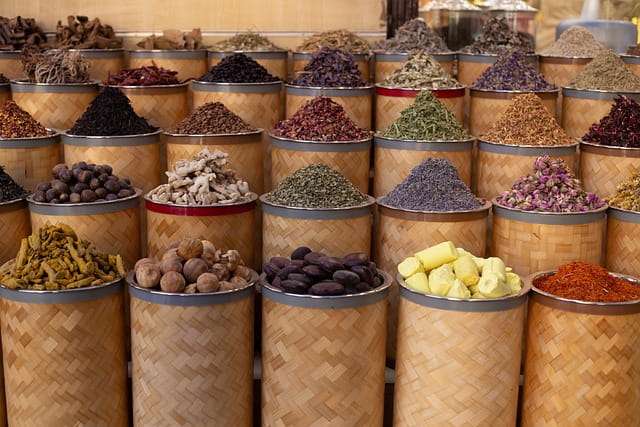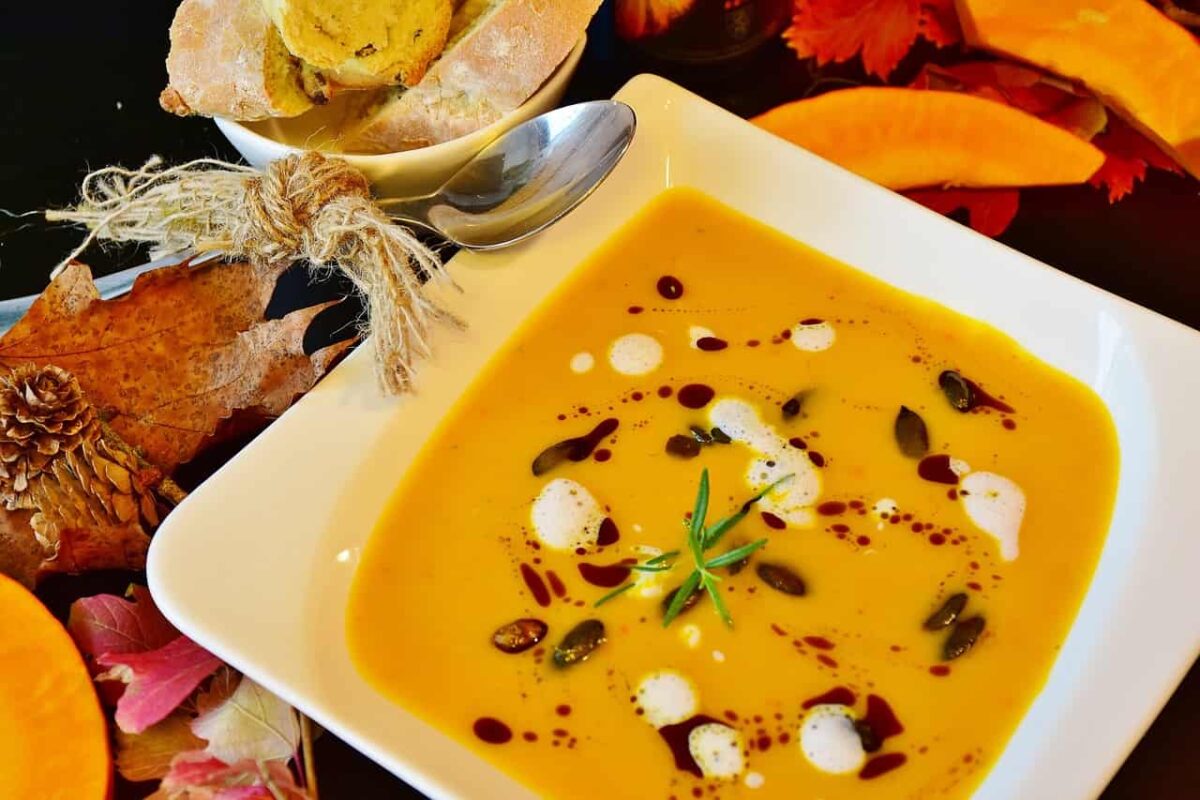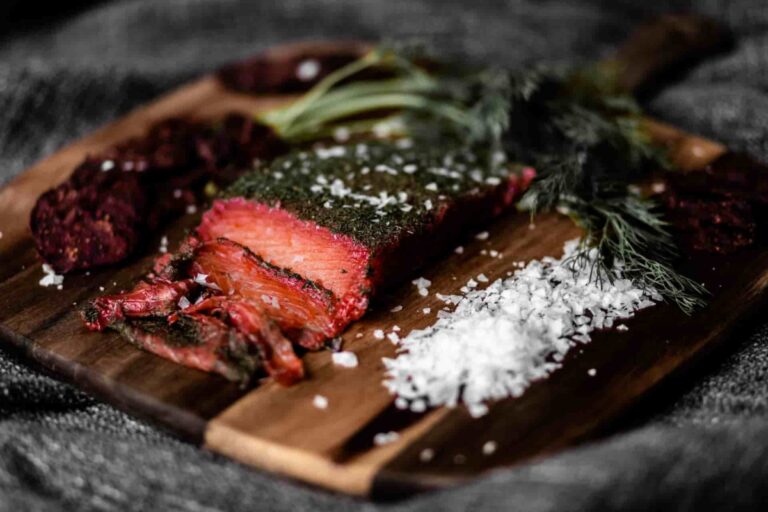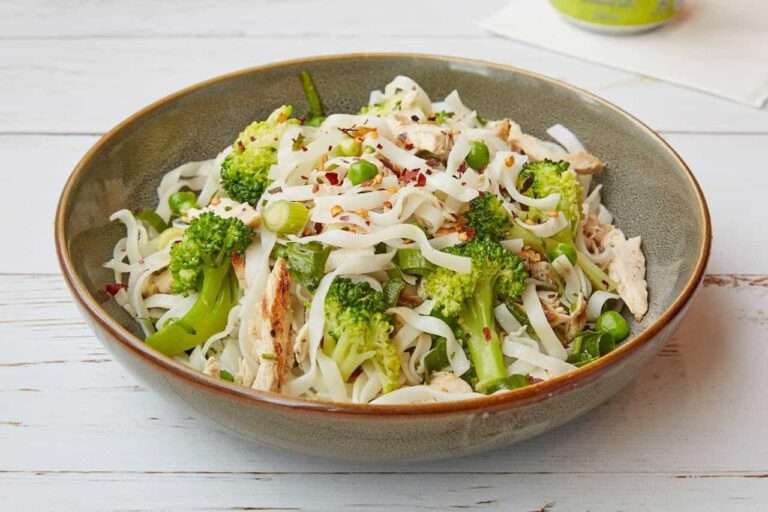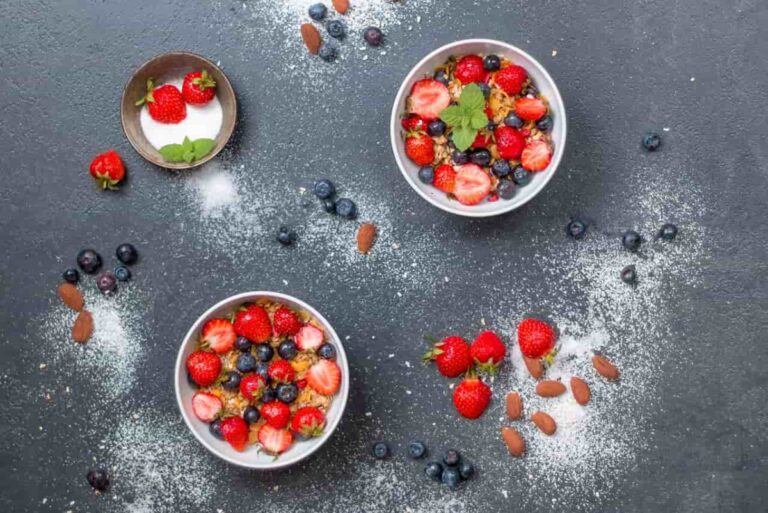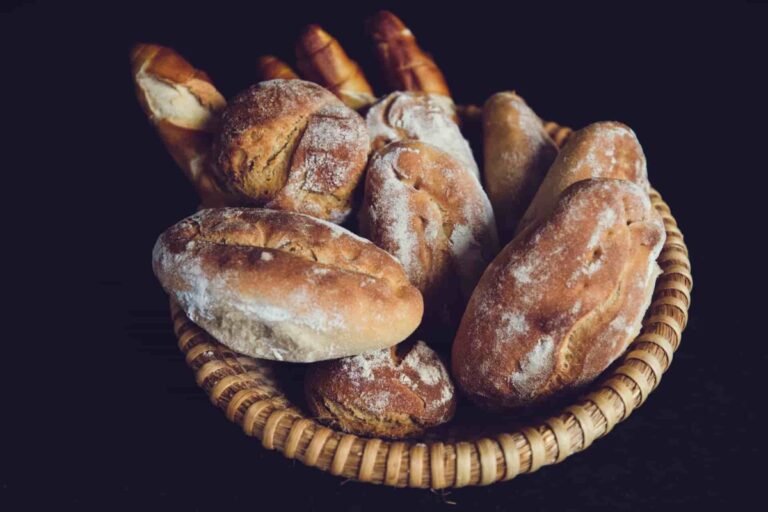35 top ginger kitchen insights
Did you know that the word “ginger” first appeared in use in the middle of the 14th century in the English language?
- The phrase is said to have originated from either the Old English word “gingifer” or the Medieval Latin word “gingiber.” In many parts of the world, ginger is also often referred to by a number of other names. For instance, the word “luya” is used in the Philippines, whilst the word “khing” is used in Thailand. both of these terms relate to the same thing.
- Ginger is one of the most well-known and valuable plants in the world. It has been used for ages as a spice for imparting taste to food as well as a medicinal herb. Ginger’s origins may be traced to the tropical rainforests that stretch from the Indian subcontinent to Southern Asia.
- Depending on the kind, the inside of the ginger rhizome might have a flesh that is yellow, white, or even red in colour. It has a brownish skin that may be thick or thin, depending on the age of the plant when it was harvested and whether it was collected when it was ripe or while it was still young.
- Almost immediately after the conquest, the Spaniards carried ginger to Mexico and the West Indies, and by 1547, ginger was being sent from Santiago de Chile to Spain. In the past, people in Jamaica and the early immigrants in the United States created beer out of it. Nowadays, natural ginger ales prepared with fresh ginger may be purchased and used as a digestive tonic.
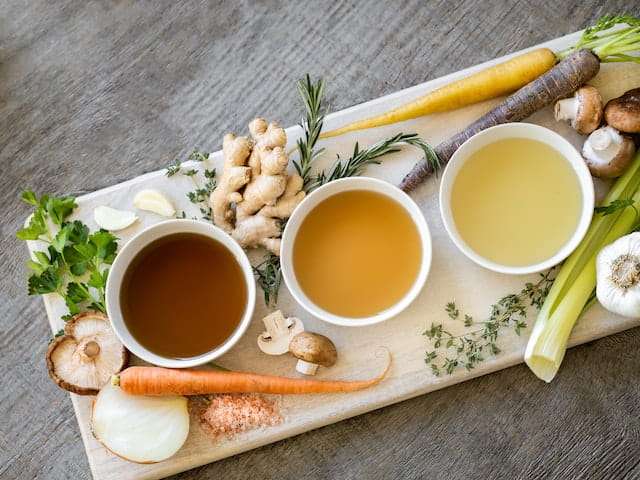
Ginger nutrition values and health benefits
- Ginger is not a very rich source of many different micronutrients; nevertheless, it does have a trace amount of magnesium and potassium. Ginger is not a big source of calories since it only has 9 calories for every five slices. The carbohydrate content of ginger accounts for the vast bulk of its total calories.
- In addition, ginger is loaded with a variety of nutrients and beneficial health properties. According to research, ginger may reduce inflammation, fights cancer, and lowers blood sugar levels in those who have diabetes. Ginger also possesses anti-cancer qualities. An examination of some of ginger’s possible positive effects on one’s health is presented here.
- Gingerol is the primary component in ginger that is responsible for the health benefits associated with its usage in conventional and alternative medical contexts. Gingerol is the component of ginger that is responsible for the distinctive aroma and taste of ginger, in addition to the anti-inflammatory and antioxidant benefits of ginger.
- The majority of the evidence suggests that gingerol is quite good in preventing nausea. It is prescribed to patients who are preparing to undergo surgery, most notably chemotherapy, and it has been shown to be helpful for pregnant women who are suffering from morning sickness.
- Joint degradation, discomfort, and inflammation are all symptoms of osteoarthritis, which is caused by wear and tear on the joints. In one investigation, those who suffered from osteoarthritis in the knee were given ginger extract ranging from 500 mg to 1 g per day over a period of between three and twelve weeks. After this time period, the individuals had less discomfort and had fewer physical limitations.
- A substantial body of data suggests that ginger intake is associated with reduced levels of fasting blood sugar, and this study was conducted more recently. In a research with 41 diabetic participants, ingesting 2 g of ginger powder on a daily basis resulted in a 12% reduction in the individuals’ blood glucose levels while they were fasting.
- In addition to its use as an adjuvant therapy in the treatment of cancer, there is mounting evidence that ginger may also help prevent cancer. This is because fresh ginger contains gingerol, a chemical that has been shown to have anti-cancer effects and is known to have these effects.
- It is believed that ginger has beneficial benefits on the cardiovascular system, including a reduction in cholesterol levels. It is essential to keep in mind that the amount of ginger used in several of these trials may have been far greater than what is safe to ingest owing to the spicy flavour of ginger. It has been established that adding ginger to your diet, either in the form of powder or raw ginger, might have beneficial effects.
- Ginger allergies are not very frequent, but when they do occur, they often manifest on the skin as irritation, redness, and rashes. Ginger may also irritate the stomach or induce heartburn in some people. Consult a healthcare expert if you have concerns about whether or not you are allergic to ginger.
- The consensus between specialists is that ginger may be used in moderation without risk, although there is a possibility that it might cause some adverse effects. Consuming ginger, for instance, might raise a person’s risk of bleeding because it slows down the process by which blood clots. This effect is probably not going to have much of an effect on the majority of individuals, but it might be a problem for those who have blood platelet abnormalities or who are at a larger risk of bleeding owing to medication or other factors.
100g of fresh ginger has 80 calories(334kj), 1.8g protein, 0.8g fat, and 18g carbs, including 2g fibre.
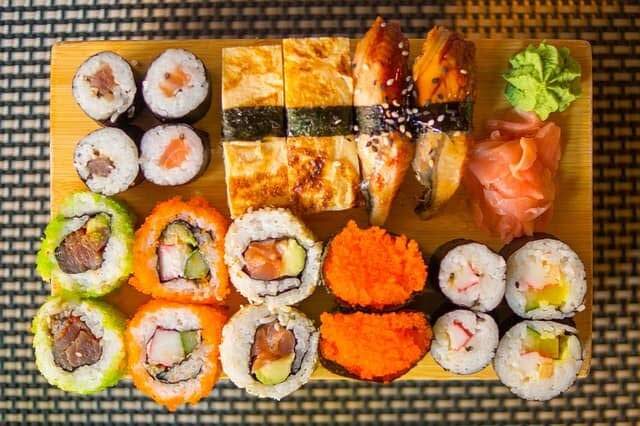
How to store ginger and how to buy them
- Several distinct kinds of sensory input are needed to choose a prime bunch of ginger. Ginger with a smooth, taut look is best. In no circumstances should ginger have thick, fibrous skin. Using your nail, you should easily be able to nick the skin. After that, sniff it to be sure. Can you taste a lot of heat and spice? If you replied yes to the above question, then your ginger is OK. If a piece of ginger has soft spots, it has been sitting out on the counter too long and should be thrown away.
- The fact that ginger is sold in larger quantities does not mean that you have to buy a complete hand’s worth. To pare down to the essentials, it helps to first isolate and then eliminate unnecessary items. Ginger should also crumble easily and look good doing it. If it doesn’t have these characteristics, it’s probably not very fresh. I leave the ginger out on the counter in a cold, dry place since I want to utilise it within the next week. Make sure the root is completely dry before putting it in the fridge. It’s best to keep the ginger dry, since even a trace of moisture might ruin it. The best way to dry it is to gently dab it with a kitchen towel.
- Put the whole root in a plastic bag and store it in the refrigerator’s crisper drawer if you want to keep it fresh for as long as possible. When storing fruit in the fridge, leaving the skin on is preferable. However, you should check for mould before using the ginger.
- Storage in the freezer will extend ginger’s shelf life even more. Put the mixture into a freezer-safe container, such a plastic bag. It’s OK to store organic ginger with the peel on top. The meat should be diced very small before being frozen. Ginger may be stored in the freezer and then grated as needed for use in cooking. Refreeze the contents of the zip lock bag for later use. Don’t stress over peeling and grating the ginger. When it’s frozen, it’s easy to work with.
- One of the best ways to store ginger for future use in cooking is to turn it into a paste.
- In my view, the skin of organic ginger is unnecessary, but if you choose to remove it, feel free to do so.
- Chopping the ginger into little pieces before blending it with the other ingredients helps avoid any large chunks of ginger that can cause a problem.
- Reduce the ginger to a paste by processing it in a blender or food processor.
- Make a paste with it, and it may be as coarse or fine as you choose.
- There’s no need to add any more liquid while grinding ginger since the root already has enough of moisture.
- Only a little quantity, about a teaspoon, is needed to combine the ginger in this scenario.
- There’s no need to add oil or salt to the ginger paste if you plan on freezing it.
- In this way, the frozen ginger may be used in a wide range of preparations, such as tea and baked goods.
- However, if you just plan on using the ginger paste in curries and want to keep it fresh in the fridge, then seasoning it with oil and salt is OK.
- Different forms and varieties of ginger lend themselves to different applications. You may buy all sorts of ginger-related products, from ground ginger to dried ginger to pickled ginger to preserved ginger to candied ginger. Galangal, like ginger and turmeric, is from the ginger family, although its flavour is less intense and more well-balanced. Instead, the flavour is more acerbic, peppery, and fiery. Galangal is widely utilised in traditional Chinese and Ayurvedic medicine, and for good reason: it has medicinal properties that make it a popular ingredient in Thai cooking.
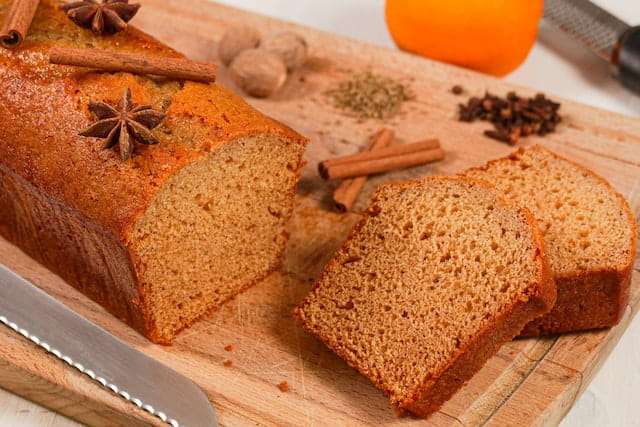
Cooking techniques, secrets, and tips from the kitchen
- The most important thing on our list of ways to utilise ginger is ginger tea. Utilizing fresh ginger root in such a way is a wonderful way to put it to use. It has a flavour that is full of hot ginger, and when combined with a touch of sour lemon and sweet honey, it creates a drink that is both soothing and warming. It’s a fantastic replacement for normal coffee if you’re looking for a strategy to cut down or eliminate your caffeine intake. And it has the potential to deliver health benefits such as aid with digestion, a decrease in inflammation, and more!
- The soffritto, also known as “beginning paste,” prepared in an Asian manner is used to season a wide variety of delicious soups and sauces across Italy.
- It also adds to the velvety smoothness of the broth. Instead of the variety of sautéed celery, onions, garlic, bell peppers, and occasionally tomato paste that is used in the Italian version, this version uses miso, onion, ginger, and garlic that are sautéed in toasted sesame oil until browned and caramelised.
- The kind of miso that yields the best results for this meal is the one that is both the saltiest and the most pungent.
- White miso may also be used; however, if you only have white miso on hand, you might wish to enhance the dish’s flavour by adding a little bit of soy sauce to it.
- This is especially true if you only have white miso on hand.
- Which meal do you always turn to when you need to lift your spirits? Fried rice is the ultimate comfort meal, but macaroni and cheese, pizza, and other familiar dishes may be enjoyable as well. It’s hard for me to put my finger on it, but there’s something about the crisp clumps of eggs and the flavourful ginger and soy-infused chunks that gives off the impression of being very revitalising. Egg fried rice is one of the most well-known dishes that calls for ginger, and the reason for its widespread popularity is because ginger is essential to the dish’s flavour.
- Try it out if you haven’t already: broccoli stir fry is another meal that calls for fresh ginger root to be used extensively.
- You won’t even remember that these veggies are good for you since they are covered in a sauce that is so tasty that you won’t be able to stop eating them.
- You now have yourself a dinner if you include a few other veggies of various vivid colours, garlic, and ginger, in addition to a very flavourful sauce.
- Because of the robust flavour, consuming your vibrant veggies in this manner is among the most mouth watering ways to do it.
- Stir-frying a meal with fresh ginger infuses it with the maximum amount of flavour that is feasible.
- The fresh ginger lends an incomparable flavour to sweet baked goods. You don’t have to restrict yourself to dealing with dried ginger root; the flavour of fresh ginger root is bolder and more delectable. Apple crumble, sometimes referred to be apple crisp due to the fact that the two desserts are fairly similar to one another, is a time-honoured favourite among foodies.
- If you’re looking to give your drinks a little kick, go no further than this easy ginger syrup recipe: Ginger simple syrup. If you want to upgrade your mixed drinks to the next level, all you need is this easy DIY cocktail syrup. You won’t believe how much flavour the item adds to the meal even when only a little amount is used. A dash of this gives mixed drinks a gingery undertone; it’s also wonderful for giving mocktails an air of intrigue. You may have it in a whiskey sour or a Penicillin, both of which are great drinks.
- Poke bowls are another another mouth watering ginger dish that you should try. This traditional Hawaiian cuisine of raw fish that has been seasoned, rice, and crunchy veggies has become more popular on the mainland, and it is now being consumed by everyone. It’s true that poke is just as amazing as it sounds. Poke may be prepared quickly and easily in the convenience of one’s own home, making it an appealing choice not just for a weeknight meal but also for an appetiser during a party. When paired with garlic, soy sauce, and sesame oil, ginger imparts just the right amount of flavour to the ahi tuna.
- Our ginger series comes to a satisfying end with a bowl of hearty comfort food in the form of lentil soup. The meal is served over rice and is flavoured with red curry paste, coconut milk, and root vegetables. The red lentils and root vegetables give the dish a hearty texture, and the meal is topped with rice. Because of the large number of different flavours and textures that are there, it provides a feeling that is both rich and opulent. In addition to being a satisfying dinner based on plants, it is also very good for you!
- Ginger goes well with a wide variety of foods, including apples, apricots, and vegetables. Some examples of these seasonings and condiments are curry, garam masala, lemongrass, mint, miso, turmeric, and wasabi. Use kombu, seaweed, honey, cream, and yoghurt in savoury meals, along with chicken, seafood, beef, shellfish, oats, rice, tofu, almonds, tahini, seitan, chickpeas, grains, lentils, quinoa, and chickpeas.
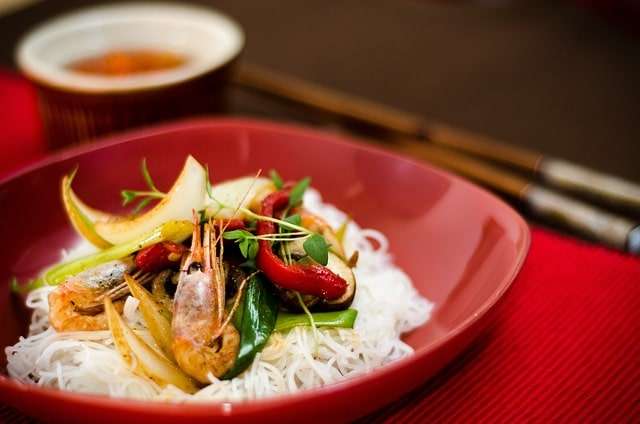
The history of ginger from the beginning until today
- Ginger was originally mentioned in China’s Warring States (475–221 BC) Confucius Analects. Every meal, Confucius ate ginger. The monk Faxian stated in 406 AD that Chinese ships carried ginger in pots to prevent scurvy. The Song Dynasty introduced southern Chinese ginger (960–1279).
- Dioscorides (40–90 AD) and Pliny the Elder (24–79 AD) recorded ginger, which Arabs brought to the Mediterranean. Ptolemy stated Ceylon developed ginger about 150 AD (Sri Lanka). European pharmacopoeias have included raw and preserved ginger since the Middle Ages. A pound of ginger cost a sheep in 14th-century England.
- Lassi and spicy masala chai utilise it. Pulse and lentil curries, vegetable recipes, and more need fresh ginger. Finely mincing or powdering fresh ginger and peeled garlic cloves makes ginger garlic masala. Ginger, fresh and dried, flavours winter tea and coffee. Southern Indian summer yoghurt drink “Sambharam” has ginger, green chilies, salt, and curry leaves.
- Ginger is halia in Malaysian soups. In the Philippines, salabat is made with ginger, called luya. Ginger leaves may flavour and decorate shrimp and yam soup. After cooking, Chinese people eat sliced or whole ginger root with fish and chopped ginger root with pork. Herbal tea and Chinese confectionery include ginger. Ginger milk curd may be made using raw ginger juice.
- Caribbean dishes like Christmas sorrel use ginger. Jamaicans produce homemade carbonated ginger beer. Jamaican ginger cake and ginger tea need fresh ginger. Corfu makes ginger beer Tsitsibira. Corfu and other Ionian islands embraced British-brought alcohol during the United States of the Ionian Islands.
- Western desserts include sodas, biscuits, gingerbread, ginger snaps, parkin, and specula’s. France’s ginger-flavored Canton, Jarnac, is popular. UK ginger-flavored Gingko wine is green-bottled. Ginger flavours coffee and tea.
